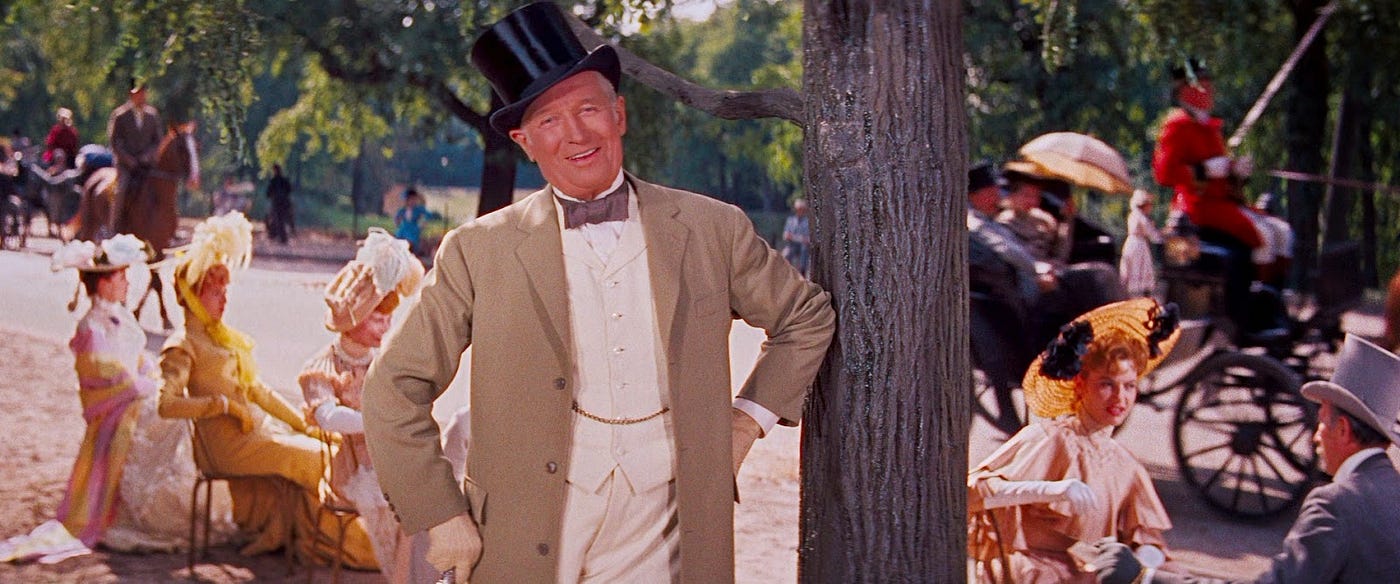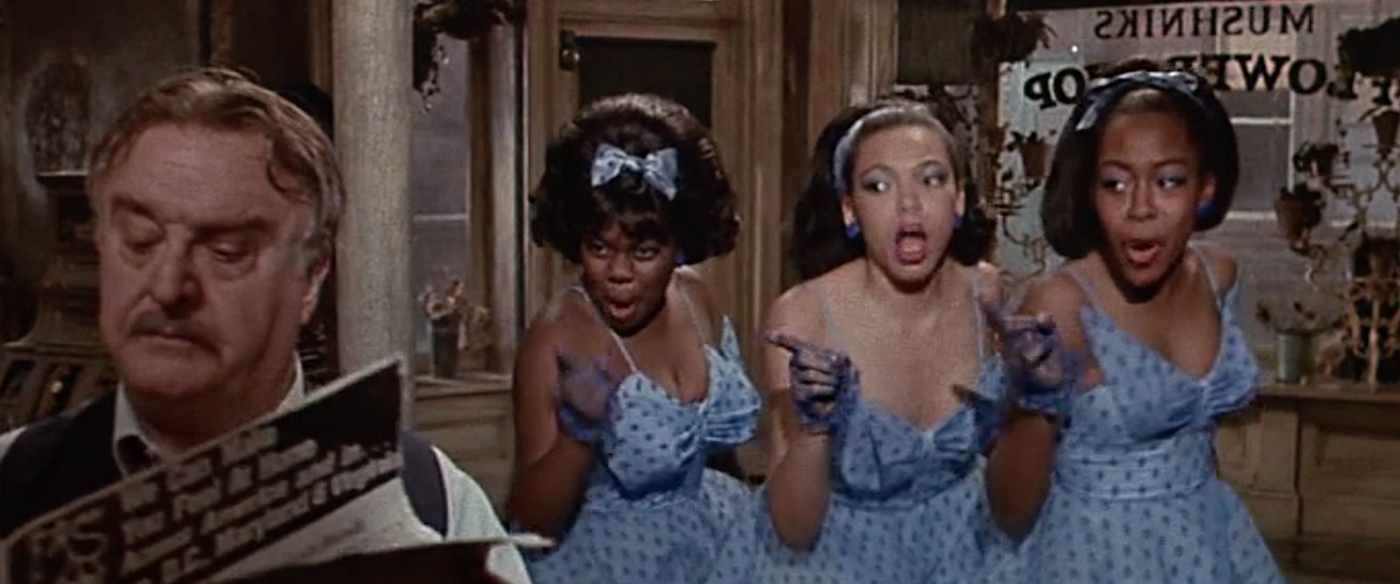Oh No, It's Become Self Aware!
 |
| (Originally published May, 2021) |
I tend to get excited about movie musicals — more often than I care to admit — often geeking out to unfortunate listeners, who tend to have the same criticism: “Yeah, musicals just aren’t realistic enough for me.”
To that end I could argue that there is no such thing as a realistic film. Even the most dogma style film takes liberties with reality. But in a sense, you’re right! Movie musicals aren’t realistic. They inhabit their own unique versions of reality, making it possible for filmmakers to explore themes like love and loss, and offer powerful commentary.
Yes, you heard me right: powerful. Why? Because they’re not like any other genre out there. To me, musicals offer a way of looking at life that other films can’t. The primary goal of any film is to give us insight into the main characters’ emotions and how they change throughout the course of the story. Movie musicals do this through song. Each song in a musical provides the audience a unique window into a character’s thoughts and feelings in that moment. This is often referred to as an “integrated musical.” The songs are sung by the main character, and they advance the plot and emotions forward.
This brings us to an interesting question about musicals. Do the characters know that they’re singing and dancing? Or is it all in their heads? This is something that has changed and evolved throughout the history of musicals; it seems it can go either way. For example, in Chicago (2002, Rob Marshall) it is implied that almost every song and dance is simply part of Roxie’s imagination. On the other hand, in Singin’ in the Rain (1952, Gene Kelly and Stanley Donen), in the titular number Gene Kelly gets stopped by a cop in the middle of his dance. He stops, looks embarrassed for a moment, then gets on with his life. We are left to believe he really was dancing and singing in the street.
However, there is a third way filmmakers have chosen to handle this question. It seems to be pretty rare — I can only cite three examples where I’ve noticed this approach. Occasionally in movie musicals, a character will pop up who is self aware. This character appears to be a sort of omni-present force, who is aware both of the audience and the other characters in the film. So what, then, is the purpose of having this character in a musical?

Let’s take a look at the earliest example I can find: Gigi (1958, Vincent Minnelli). We open in a park in early 1900s France. Maurice Chevalier begins to sing a somewhat creepy (by today’s standards) song called Thank Heaven for Little Girls. He comments that this is before the Great War, before the Depression, and there’s a certain innocence in love. He says “without them, what would little boys do?” It borders between being empowering and sexist. But regardless — as he’s singing, he looks straight at the camera. He’s addressing the audience directly, and he even goes on to narrate the story.
We cut to one young girl in the crowd, Gigi. He says, “This could be about any one of these little girls. But it isn’t, it’s about one in particular. Gigi. What you have to look forward to.” No one else in the crowd seems to hear Maurice Chevalier. We have to wonder, is he manipulating reality somehow?

Next up is Cabaret (1972, Bob Fosse). Cabaret is such a groundbreaking musical, I could write a whole essay on it. We open with Joel Grey, the MC in the cabaret. He turns dramatically to the camera, stares straight at us — and welcomes us in with the song Wilkommen.
Later, after he’s grabbed our attention, he turns to the club. This back-and-forth happens throughout the musical. Joel Grey acts as our liaison in the story. For example, when Sally Bowles and Brian Roberts befriend the rich Maximillian Von Huene, both have sexual relations with him. Joel Grey sings Two Ladies, a song all about polyamarous relationships.
The main character, played by Liza Minnelli, is aware of Joel Grey and works with him (although she rarely interacts with him except in song and dance — they seem to have no interpersonal relationship). But she is completely unaware that he’s actively involved in telling her story.

Finally we have Little Shop of Horrors (1986, Frank Oz). We open in the slums of Skid Row. We see the shop where the story will take place. But we don’t meet our main character yet. Instead, three girls dressed in showy, musical clothes walk out of the alleyway. They tell us to beware of the shop! Call a cop. There’s a monster in there and he’s gonna get you. Why are you still here? Throughout the movie they open other songs and appear in songs that the other characters sing. Yet, no one else in the movie is aware of their presence.
So now that I’ve provided three examples of musicals that break the mold, I should explain that there is actually a second type of musical, as it turns out: the diegetic musical. These are different from those integrated musicals I was talking about, like Singin’ in the Rain. Diegetic musicals, such as Cabaret, are musicals where all the songs take place in a context/location where it would make sense for someone to burst into song. (i.e., a nightclub, a stage, a theater.)
However I hesitate to label the three musicals I’m talking about as diegetic musicals because not all of them use song in that context. Little Shop of Horrors and Gigi don’t open in a place where one would be expected to burst into song. And even Cabaret pushes this element further than diegetics.
No, these self aware characters set the stage, but they allow the main character to tell the story. They wink and nudge at the audience, telling us to look at this, pay attention to that, here’s the emotion we’re looking at right now. But they never take away from the main character’s emotional journey — they only enhance it. It seems to me that these characters all exist in a plane of their own. They are actively involved in the story, yet at the same time, they are somewhat removed from it, as their only purpose is to help highlight and push the plot forward.
Having this self-aware companion in musicals also provides us, the audience, with commentary on the society that the movie is exploring. In Cabaret, Joel Grey doesn’t just sing about Liza’s journey. He also sings about the Nazis’ slow takeover of Germany. He gives us insight into how it’s possible that things devolved into facism. In Little Shop of Horrors, the girls sing about what being poor is like. How the whole world is against you, and you would do anything to get out if you could. This provides us with insight into Rick Moranis’s character.
I think the most important takeaway from this is that musicals are a unique artform that have been evolving since the beginning of film (the first talkie was a musical, after all). As we move through film history, filmmakers have explored the unique structure that only musicals allow. Getting into the modern era, filmmakers have become more interested in making more “realistic” musicals by creating spaces where the song has context. So, you’re welcome, everybody.
The next time you look at a film, whether it be a musical or not, keep these self aware characters in mind. They offer a very unique way of telling a story, and we haven’t seen enough of them in the course of cinema.


Comments
Post a Comment